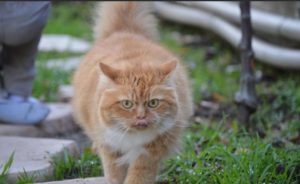By Vanessa Vandersande DVM
When I first graduated from veterinary school there weren’t many dental disease preventatives on the market. While I counseled clients about preventative care I always asked the question, “How often do you brush your pet’s teeth?” I always chuckled a little as I said it though because it felt like a ridiculous question.
Certainly there are some people who are able to brush their pet’s teeth but for the most of us the prospect is a nightmare. My husband and I are both veterinarians, we know tooth brushing is the gold standard, but we simply don’t do it. Lately the market is flooded with dental disease prevention for our pets. It seems every treat and chew promises to cleanse and leave each little tooth gleaming white. But can all these claims be true?
Prevention is the only tool we have to keep our pets from requiring frequent dental cleanings under anesthesia and ideally we would keep those cleanings to a minimum. But how is one to choose which form of dental prevention is best?
The veterinary profession has an answer to this problem. In 1980 a group of veterinary dentists and other dental professionals helped form the VOHC or Veterinary Oral Health Council. This council is a group of veterinary dental professionals who created a series of protocols by which dental disease preventatives are judged. Only products which are proven to reduce the severity of periodontal disease are permitted to bear the VOHC label. When shopping for a dental disease preventative treat or diet, you can feel confident you are making a good choice if you see the VOHC label on the packaging. These products will definitely help protect your pet’s teeth.
The VOHC also curates a list of approved products at www.VOHC.org where you can log on and check on their list for new products that have won approval. At Copper Hill Animal Clinic, we are passionate about providing only the highest quality preventatives so we only carry dental prevention approved by the VOHC. Let us know if we can pick one out for your pet!

